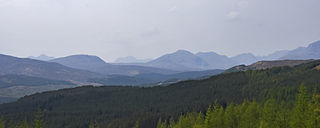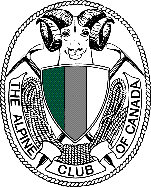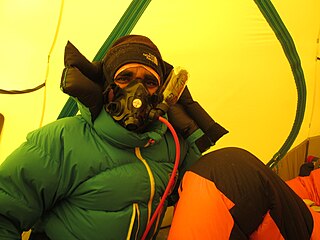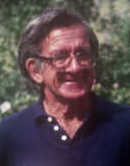
Mountaineering, mountain climbing, or alpinism is a set of outdoor activities that involves ascending mountains. Mountaineering-related activities include traditional outdoor climbing, skiing, and traversing via ferratas that have become sports in their own right. Indoor climbing, sport climbing, and bouldering are also considered variants of mountaineering by some, but are part of a wide group of mountain sports.

George Herbert Leigh-Mallory was an English mountaineer who participated in the first three British Mount Everest expeditions in the early 1920s. He and Andrew Irvine were last seen ascending near Everest's summit, during the 1924 expedition, sparking debate as to whether they reached it before they died.

Junko Tabei was a Japanese mountaineer, author, and teacher. She was the first woman to reach the summit of Mount Everest and ascend the Seven Summits, climbing the highest peak on every continent.

The British Mountaineering Council (BMC) is the national representative body for England and Wales that exists to protect the freedoms and promote the interests of climbers, hill walkers and mountaineers, including ski-mountaineers. The BMC are also recognised by government as the national governing body for competition climbing.

Established in 1889, the Scottish Mountaineering Club is a club for climbing and mountaineering in Scotland.

Donald Desbrow Whillans was an English rock climber and mountaineer. He climbed with Joe Brown and Chris Bonington on many new routes, and was considered the technical equal of both.
Alan Paul Rouse was the first British climber to reach the summit of the second highest mountain in the world, K2, but died on the descent.

Bachendri Pal is an Indian mountaineer. In 1984, she became the first Indian woman to climb the summit of the world's highest mountain, Mount Everest. She was awarded the third highest civilian award in India, Padma Bhushan by the Government of India in 2019.
Harold Andrew Raeburn was a Scottish mountaineer. He was one of the most prominent British mountaineers of his era with several first ascents. In the late 19th and early 20th centuries he took part in numerous ascents in Norway, contributing to the popularization of Norwegian mountaineering among the international mountaineering community. Some of his regular mountaineering partners in Norway were William Cecil Slingsby, Howard Priestman and Norwegians Kristian Tandberg and George Paus. He was mountaineering leader on the initial 1921 British Mount Everest reconnaissance expedition.

The Alpine Club of Canada (ACC) is an amateur athletic association with its national office in Canmore, Alberta that has been a focal point for Canadian mountaineering since its founding in 1906. The club was co-founded by Arthur Oliver Wheeler, who served as its first president, and Elizabeth Parker, a journalist for the Manitoba Free Press. Byron Harmon, whose 6500+ photographs of the Canadian Rockies in the early 20th century provide the best glimpse of the area at that time, was official photographer to the club at its founding. The club is the leading organization in Canada devoted to climbing, mountain culture, and issues related to alpine pursuits and ecology. It is also the Canadian regulatory organization for climbing competition, sanctioning local, regional and national events, and assembling, coaching and supporting the national team.

The Climbers' Club is the senior rock-climbing club in England and Wales. The club was founded in 1898. The CC one of the largest publishers of climbing guidebooks in many of the main climbing areas of England and Wales. The club also owns and operates a number of climbing huts in England, Scotland, and Wales.
The Rucksack Club was founded in Manchester in 1902 and has a current membership of well over 500 men and women. According to the Rules, "The purpose of the Club is to encourage mountaineering, climbing and hill walking and bring together all those who are interested in these pursuits."
The New Zealand Alpine Club (NZAC), is a national climbing organisation in New Zealand. It was founded 1891 and is one of the oldest alpine clubs in the world. NZAC was one of many founding members of International Climbing and Mountaineering Federation (UIAA), and still an active member. As of 2021, NZAC has over 4,000 members who are spread across twelve main sections, eleven in New Zealand and one in Australia, plus members in other countries. It runs a national office based in Christchurch.

Expedition climbing, is a type of mountaineering that uses a series of well-stocked camps on the mountain leading to the summit, that are supplied by teams of mountain porters. In addition, expedition climbing can also employ multiple 'climbing teams' to work on the climbing route—not all of whom are expected to make the summit—and allows the use of supports such as fixed ropes, aluminum ladders, supplementary oxygen, and sherpa climbers. By its nature, expedition climbing often requires weeks to complete a given climbing route, and months of pre-planning given the greater scale of people and equipment that need to be coordinated for the climb.

In climbing and mountaineering, a traverse is a section of a climbing route where the climber moves laterally, as opposed to in an upward direction. The term has broad application, and its use can range from describing a brief section of lateral movement on a pitch of a climbing route, to large multi-pitch climbing routes that almost entirely consist of lateral movement such as girdle traverses that span the entire rock face of a crag, to mountain traverses that span entire ridges connecting chains of mountain peaks.
The Ladies' Alpine Club was founded in London in 1907 and was the first mountaineering club for women. It merged with the Alpine Club of Great Britain in 1975.
Raymond Leslie Burrows Colledge was an English climber and mountaineer who was a member of the British 1952 Cho Oyu expedition and made the third British ascent of the north face of the Eiger in 1969.

Norman David Hardie was a New Zealand climber who was one of the climbers on the 1955 British Kangchenjunga expedition who first reached the summit of the 8,586-metre (28,169 ft) mountain, the third-highest mountain in the world.













